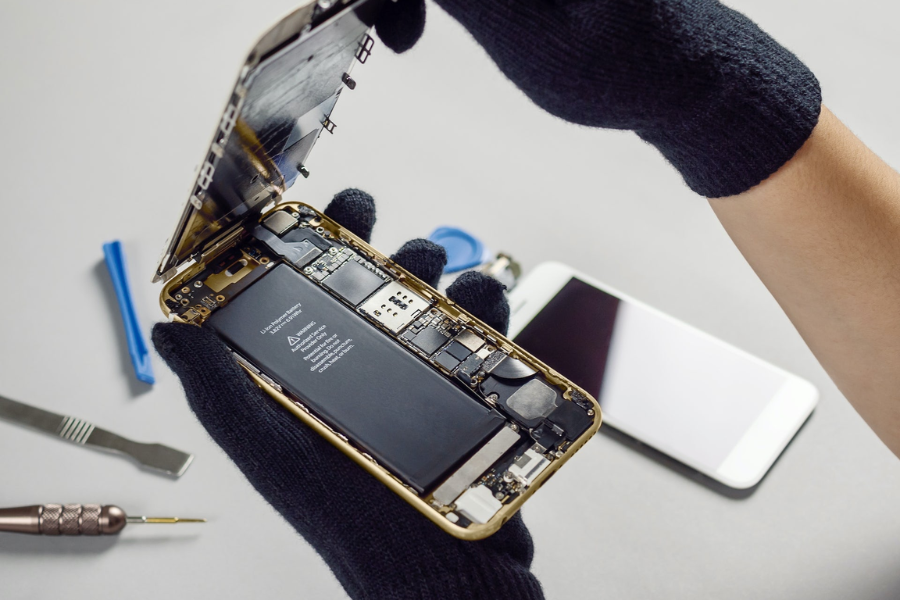New EU labeling rules to make batteries last longer and keep them out of landfills
Batteries are responsible for providing the energy we need for our modern lives and, in many ways, are shaping the future of sustainable mobility. However, there is a significant challenge: the management of these batteries along their entire value chain, from manufacture and use to proper end-of-life treatment.
Addressing this problem requires detailed information on the history of each battery throughout its life. From the type of charge and discharge cycles it has undergone to its energy efficiency and charge retention capacity over time. This information should be available to any user or recycler interested in reusing them in second-life energy storage.
What do we do with used batteries?
With use, batteries suffer deterioration of their electrodes. Their constituent elements were not inherently designed by nature to store energy in an unlimited manner; eventually, they tend to transform into inactive compounds for operation.
However, when an electronic device fails – not only cell phones and computers, but also systems with more sophisticated battery-powered electronics, such as alarms or emergency lighting – it is not always due to battery malfunction.
When repairing an electronic device, one of two cases usually occurs:
The device is faulty, but the battery is in good condition.
The device no longer works because the battery does not provide the necessary power or lasts too little time.In the first case, the entire device, the tablet for example, is usually decommissioned and the battery could be used to power the same type of newly manufactured device.In this way we avoid batteries reaching the landfill.In the second case, one can replace the battery with a new one and continue to use the device. In this way we prolong its life and also reduce electronic waste.If the spent battery that we remove has only a slight loss of capacity, it can be used for a second use. As a second-hand battery, it could be used as a power bank or portable battery such as those used to extend the capacity of cell phones, or to power a small device. If it has no capacity left, recycling issues would need to be addressed.In the second life of batteries, electric car batteries play an important role, as they are packs with dozens or multiple small batteries. If they have not degraded too much, there are many applications in which to store a very considerable amount of energy from these batteries. These will have a lower cost, as they are second use, and a very high capacity, because the batteries will have a very high capacity, as they will have a lower cost, as they are second use, and a very high capacity.
Environmental and social awareness
In an increasingly environmentally conscious world, consumers are increasingly demanding devices that are environmentally friendly and economical in the long term. The energy efficiency and durability of a battery are key factors, as they not only reduce e-waste, but also save money. But soon consumers will also want to know how much energy was used in the manufacture of the devices they buy and how much comes from renewable sources.
While this approach is still under development, the idea is clear: to create a complete record of a battery’s life, a documentation or “passport”, for more efficient and sustainable management. This also extends to the fledgling electric vehicle battery production industry, where battery packs are expected to be designed so that they can continue to be used after they begin to lose capacity. If an electric vehicle has batteries of about 70 kWh, it could still have about 56 kWh available at the end of its useful life. This is enough to power 10 homes a day.
However, the implementation of these policies is a considerable challenge, as it involves the need to coordinate various sectors. This includes battery and electronic device manufacturers, automobile manufacturers and electronic equipment repair shops. Specifically in the area of battery and electric vehicle manufacturers, they face challenges related to the sharing of information that often gets entangled in intellectual property disputes.
New EU regulations
The European Union has therefore taken a crucial step in promoting the circular economy with the introduction of new regulations for batteries used in electric mobility and mobile devices.
Thus, as of June 20, 2025, batteries in mobile devices and tablets will have to display information on their energy efficiency, durability, water and dust resistance and ability to withstand accidental drops. This is the first time that a product placed on the EU market will have to display a label, which in schematic form could be like those on refrigerators, with an eco-design score that measures ease of repair.
Among the most notable requirements, battery life must be designed to withstand at least 800 charge and discharge cycles, maintaining 80% of their initial capacity.
Rules on disassembly and repair are also imposed, with obligations for manufacturers to design devices so that batteries can be removed with normal tools without damaging the product and to provide instructions for safe removal. In addition, they must provide replacement parts promptly and for seven years after the sale of the product.
Less waste and demand for raw materials
As for electric vehicle batteries, as of February 1, 2027, they will have to include a label or “sustainability passport”. This document will provide a complete overview of the battery’s life cycle, from its expected life to details on the origin of the elements that make it up and their quantity, as well as details on production and the availability of spare parts.
In terms of recycling, the regulation establishes minimum levels of materials recovered from waste batteries for various timeframes, as well as minimum levels of recycled content from manufacturing and consumer waste for use in new batteries.
Extending the life of batteries and promoting battery remediation not only reduces the need to produce new batteries so frequently, but also reduces the demand for raw materials and the generation of electronic waste. The aim is to ensure that batteries do not end up in landfills, that they last and that they are easy to handle for recycling or reuse.
As we move towards a cleaner, more sustainable future, the way we handle our batteries will play a key role in creating a greener world.



